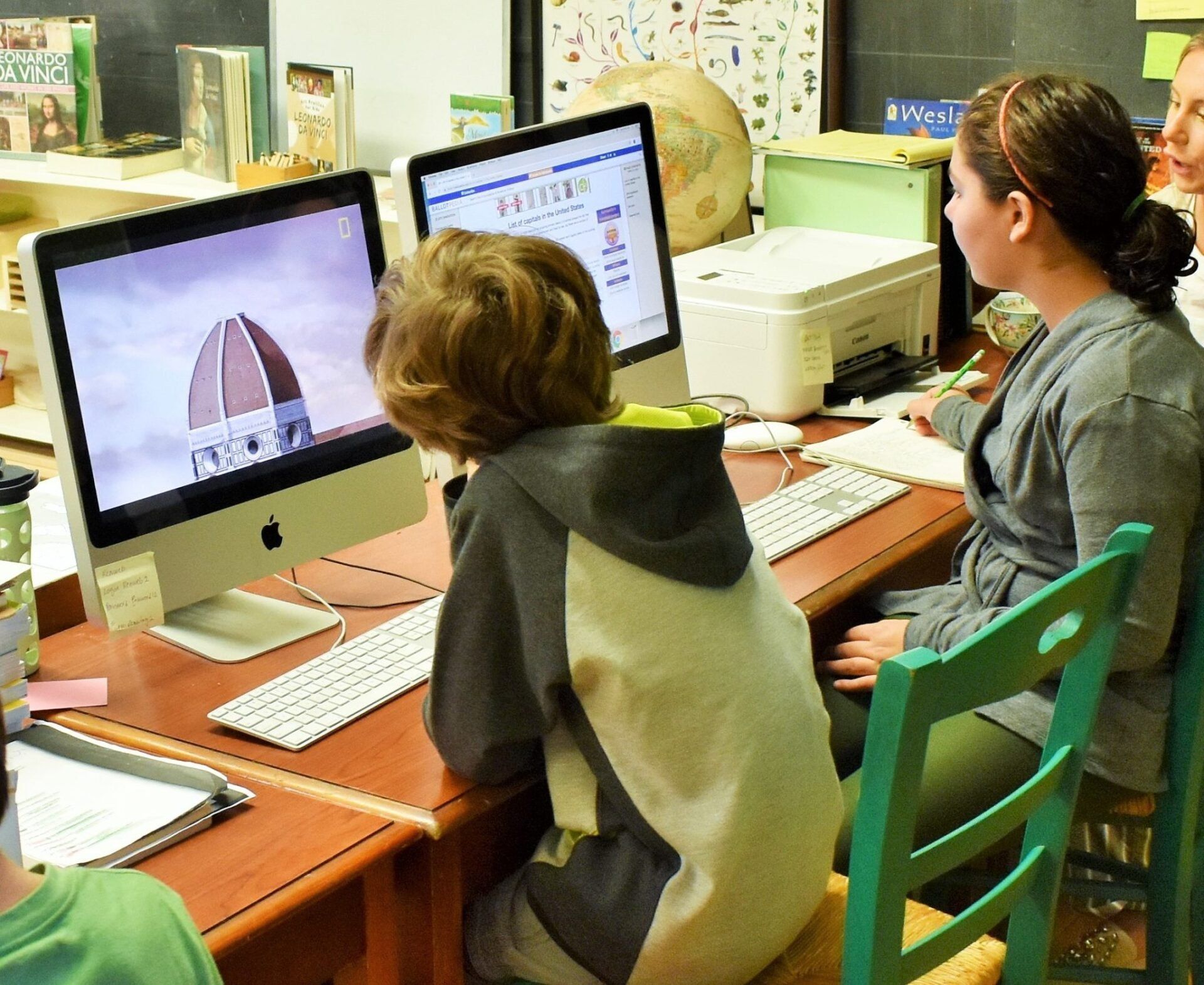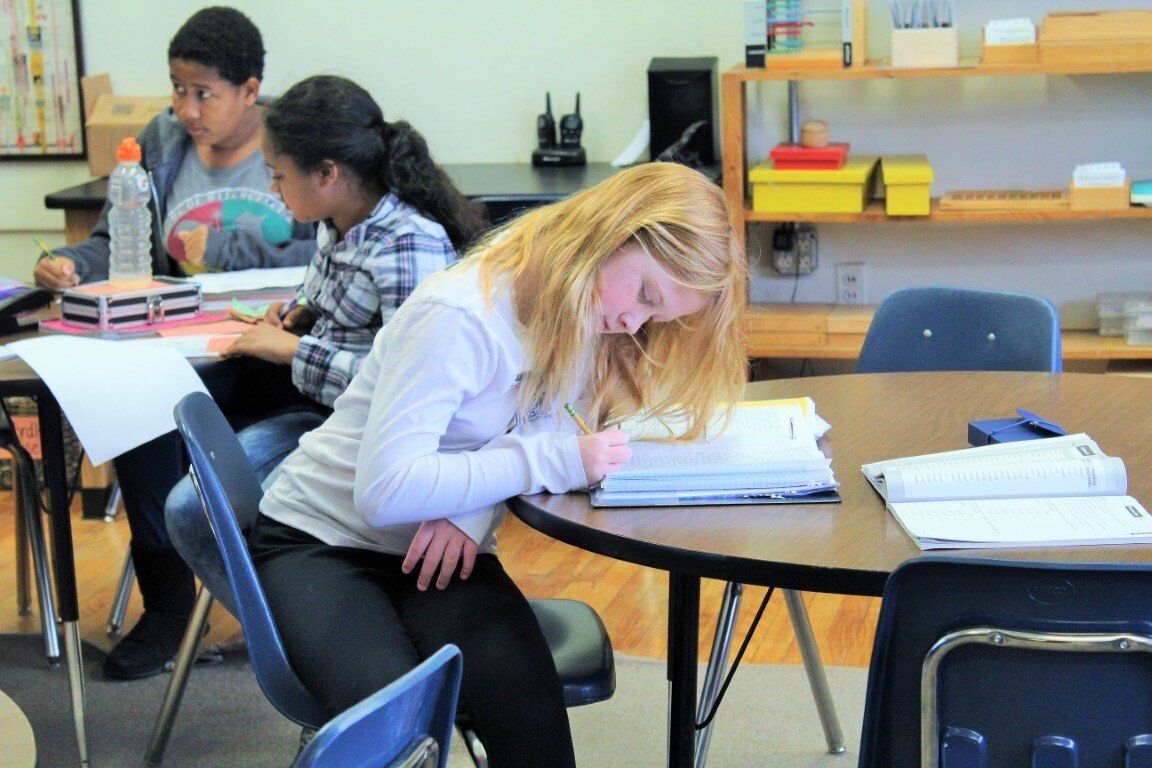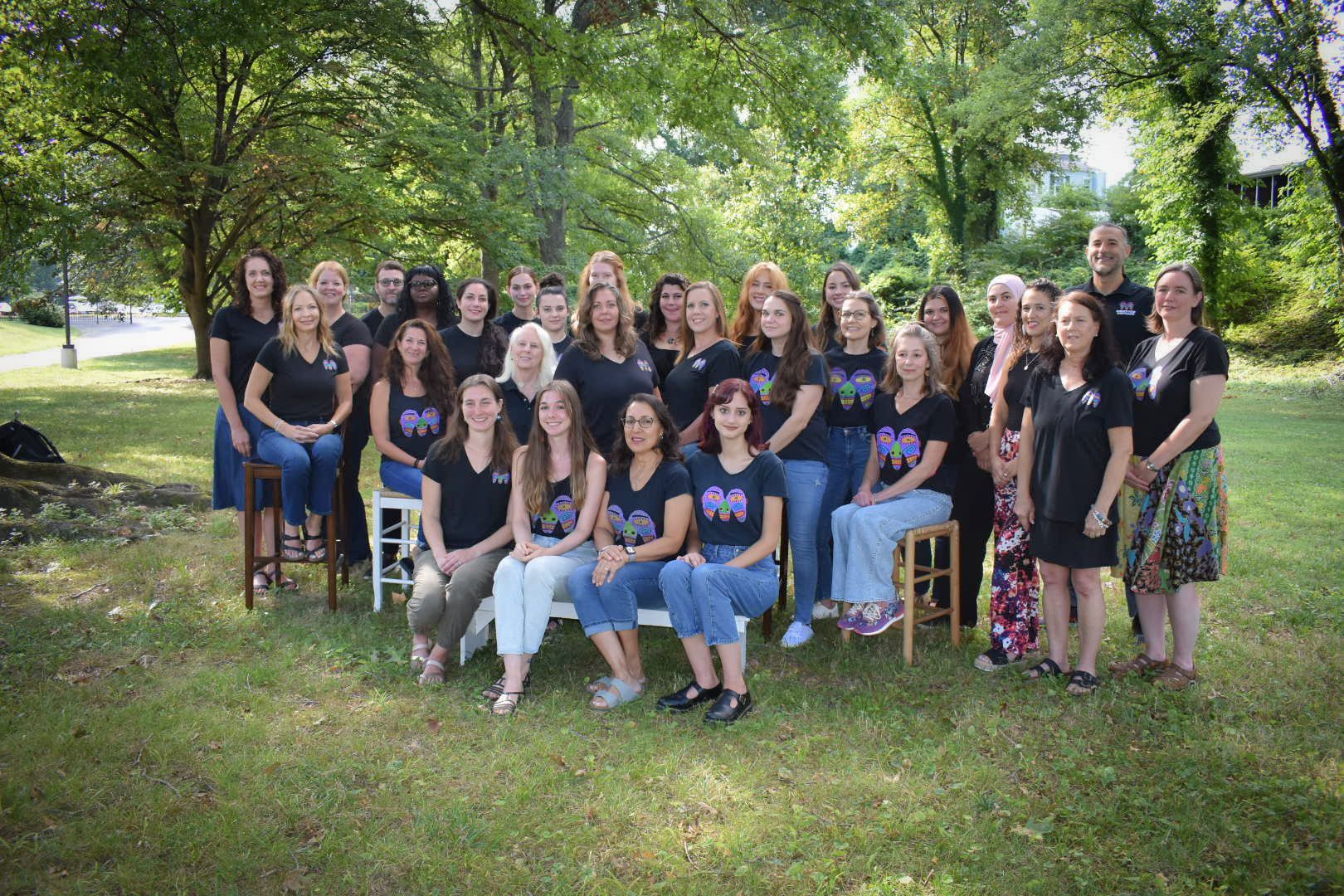Handwriting, cursive at MMS
Handwriting is an important part of early education. Unfortunately, many schools have abandoned explicit handwriting instruction due to time constraints and a belief that handwriting/work with pencil and paper is not as important as it once was in our society.
A number of scientific studies point to the importance of handwriting, including this one which concluded that handwriting (as opposed to typing or tracing) guides preliterate children toward developing reading skills. This article highlights five of the important reasons we should not allow direct instruction in this area to go by the wayside. Not only does learning handwriting early help children develop skills needed for reading, evidence suggests it makes children better writers, spellers, and leads them towards future success in academics. When children are able to write fluently with proper and consistent letter formation, they are free to complete big work without having to stop and think about how to write the letters.

In Montessori schools, handwriting is a critical component of children’s learning. As with so many other skills, our curriculum takes a spiraling approach, indirectly preparing children prior to direct instruction. Very young children develop the muscles necessary for a pincer grasp while they manipulate materials such as the knobbed cylinders, a Montessori favorite!

There are two other important materials in the Primary classroom that facilitate handwriting readiness: the metal insets and the sandpaper letters. The metal insets are wooden trays that hold a series of stencil-like shapes. Removable shapes are blue with a pink background. Some shapes have straight-lined sides while others are curved. Children trace the shapes with a pencil, giving their hands a chance to practice creating a variety of lines. Increasingly challenging activities encourage children to create different patterns with colored pencils while staying inside the original traced lines. At first glance, this may appear to be a fun art activity but its main intention is to prepare children for their upcoming work in handwriting.

Montessori sandpaper letters take the work a step further. Twenty-six wooden tiles are adorned with gritty, sand-textured letters of the alphabet. Children are given lessons on how to trace these letters with their fingers and say the sound. (As a side note, Montessori children are taught the sound of each letter in conjunction with its name, which makes much more sense for reading preparation.)
Once children enter the elementary years in a Montessori school, they are required to write throughout the day. Typically, children work throughout the morning work period on a largely independent basis, unless they are receiving a direct, small-group lesson from the guide. During this independent work they record parts of their work in notebooks. Children also record their goals for the day in writing.

As part of our multi-year curriculum alignment work, we have identified end of level outcomes specific to handwriting. At MMS, Primary children are given direct instruction with manuscript (print) letters, starting with lowercase and moving into uppercase before the child transitions to Elementary. In Lower Elementary, the first-year students spend time fine-tuning the manuscript letter formations, and then move into cursive writing. By the time the children complete the third year of Lower Elementary, we expect that they will have mastered the formation of all cursive letters, lowercase and uppercase. When the children enter Upper Elementary, they spend some time fine-tuning cursive writing before learning keyboarding skills. When students leave Upper Elementary and transition to Middle School, we expect that they will be able to use manuscript writing, cursive writing, and keyboarding for written expression.




